According provided by Nikon ED AF-S Nikkor 70-300mm 1: 4.5-5.6G VR IF SWM lens is huge thanks to the store www.fotika.com.uawhere you can find a huge number of different used photographic equipment, including similar lenses.
Nikon ED AF-S Nikkor 70-300mm 1: 4.5-5.6G VR IF SWM (short for Nikon 70-300 VR) is the classic telephoto zoom lens for Nikon FX full-frame cameras. Such zooms are in great demand for a wide range of photographic tasks. In 2006, Nikon 70-300 VR replaced the older model. Nikon ED AF Nikkor 70-300mm 1: 4-5.6D and for some time it was produced along with an add-on lens Nikon AF Nikkor 70-300mm 1: 4-5.6G. At the time of writing this review (summer 2015), the Nikon 70-300 VR is the only manufactured native telephoto lens of its kind. I think the Nikon 70-300 VR is the best option for anyone who does not want to mess with the more expensive and heavy professional class telephoto lenses of the 70 (80) -200 / 2.8.
All Original Similar Nikon FX Telephoto Lenses
Below is a list of all Nikon Nikkor telephoto lenses without high aperture and with auto focus support:
- Nikon AF Nikkor 70-210mm 1: 4, 1986-1987
- Nikon AF Nikkor 70-210mm 1:4-5.6, 1987-1993
- Nikon AF Nikkor 75-300mm 1:4.5-5.6, 1989-1998
- Nikon AF Nikkor 80-200mm 1:4.5-5.6D, 1991-1999
- Nikon AF Nikkor 70-210mm 1:4-5.6D, 1993-2000
- Nikon AF Micro Nikkor 70-180mm 1: 4.5-5.6D ED, 1997-2005
- Nikon AF Nikkor 75-240mm 1:4.5-5.6D, 1999-2000
- Nikon AF Nikkor 70-300mm 1:4-5.6D ED, 1998-2006
- Nikon AF Nikkor 70-300mm 1:4-5.6D, 1998-2006 (?)
- Nikon AF Nikkor 70-300mm 1:4-5.6G, from 2000 to 2014, black or silver
- Nikon AF S Nikkor 70-300mm 1:4.5-5.6G ED VR IF SWM, from 2006 to 2017
- Nikon AF S Nikkor 70-200mm 1: 4G ED SWM VR IF N Nano Crystal Coat, from 2012 to the present day
- Nikon AF-P Nikkor 70-300mm 1:4.5-5.6E VR ED, 2017 to present
The names of the lenses are indicated according to their spelling on the case.
Main technical characteristics of Nikon ED AF-S Nikkor 70-300mm 1: 4.5-5.6G VR IF SWM:
| Review Instance Name | Nikon ED AF-S Nikkor 70-300mm 1: 4.5-5.6G VR IF SWM Ø 67 made in Thailand US2603898 |
| Basic properties |
|
| Front Filter Diameter | 67 mm, plastic thread for filters |
| Focal length | 70-300 mm EGF for Nikon DX cameras is 105-450 mm |
| Zoom ratio | 4.3 x |
| Designed by | for digital cameras Nikon FX |
| Number of aperture blades | 9 rounded petals |
| Tags | focusing distance in meters and feet, focal lengths for 70, 100, 135, 200, 300 mm, bayonet mount mark, hood mount mark, mark for working in the infrared spectrum |
| Diaphragm | 70 mm from F / 4.5 to F / 32. At 300 mm from F / 5.6 to F / 40. The lens does not have an aperture ring (G - lens type) |
| MDF (minimum focusing distance) | 1.5 m over the entire range of focal lengths, maximum magnification ratio 1: 4 |
| The weight | 745 g |
| Optical design | 17 elements in 12 groups. The circuit includes 2 low dispersion element (shown in yellow in the optical diagram). The presence of such elements is indicated on the case with the abbreviation 'ED'. The red frame indicates the lenses included in the stabilizer.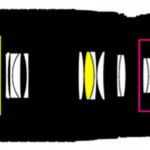 The image of the optical circuit is clickable. The image of the optical circuit is clickable. |
| Lens hood | Nikon HB-36 |
| Manufacturer country | Made in thailand |
| Period | From August 9, 2006 to July 11, 2017. Subsequently replaced by Nikon VR ED AF-P NIKKOR 70-300mm 1: 4.5-5.6E. |
| Instruction (multilingual) | Download, mirror 1 |
| Price |
In 2012, a more advanced model of this telephoto lens came out - Nikon N AF-S Nikkor 70-200mm 1: 4G ED SWM VR IF Nano Crystal Coat.
Assembly
All Nikon 70-300 VR lenses come from Thailand. To the touch the lens is quite pleasant and weighty, its weight is a little more than 700 grams. On cameras Nikon D700 и Fujifilm FinePix S5 Pro its weight does not cause any discomfort.
Nikon 70-300 VR uses 67 mm standard filters. The zoom ring is very wide, rubberized and comfortable, it’s much more convenient to rotate it than, say, the model Nikon 28-300mm 1: 3.5-5.6G VR... The focusing ring is plastic. Nikon 70-300 VR has metal bayonet mount. Almost the entire outer rim of the case is made of plastic. The retractable frame of the case consists of one section and is quite durable to the touch. As for the amateur lens, the Nikon 70-300 VR has good build quality. At one time, I used the Nikon 70-300 VR for a year, and at the same time, the lens did not begin to suffer from the spontaneous extension of its trunk.
There is a mark on the case for quick installation of the hood. The lens uses a plastic hood HB-36, which is fixed in special grooves located near the front lens of the lens. The hood can be installed in the opposite direction for transportation. In this position, it is somewhat inconvenient to use the zoom. While changing the focal length, the lens hood moves with the trunk of the lens.
On the bayonet side, the lens has a special rubber gasket, which serves to protect the lens from dust and moisture. On official sources, accurate confirmation that the Nikon 70-300 VR is a dustproof and waterproof lens cannot be found. At the same time, I am inclined to believe that because of this rubber seal, the lens still has at least some basic dust protection.
When changing the focal length, the rear lens moves in the middle of the lens body like a pump - it draws in and pushes out air. This behavior of the rear lens is called 'vacuum cleaner effect', which can increase the amount of dust that accumulates in the camera. It is funny that when zooming from 70 to 100 mm, the rear lens does not move, the movement occurs only in the range from 100 to 300 mm.
Diaphragm
Diaphragm lens consists of 9 rounded petalsthat form a smooth hole. The aperture range is available from F / 4.5-5.6 to F / 32-F / 40. Unfortunately, compared to the previous version of the lens - Nikon ED AF Nikkor 70-300mm 1: 4-5.6D, the new Nikon 70-300 VR has lost some of its aperture and now uses F / 4.5 instead of F / 4, which is about 1.27 less.
There are marks with a focal length on the zoom ring, the following is a list with the minimum numbers F available for these marks:
- 70 mm - F / 4.5
- 100 mm - F / 4.5
- 135 mm - F / 4.8
- 200 mm - F / 5.3
- 300 mm - F / 5.6
Stabilizer
The Nikon 70-300 VR has a VR stabilizer (Vibration Reduction), which according to the instructions can compensate up to 4 stops by shutter speed. In numerical terms, this means that you can shoot at shutter speeds 16 times longer than what a lens without a stabilizer requires. The stabilization system of the Nikon 70-300 VR refers to second generation (VR II).
The instructions for the Nikon 70-300 VR lens indicate 4 stops (Nikon measurements), and on the official website only 2.5 stops (measured by CIPA). In any case, the stabilizer works well.
To enable / disable the stabilizer on the lens there 'VR ON / OFF' switch. There is a 'Normal / Active' switch to select a mode. The stabilizer can operate in two modes: 'Normal' and 'Active'.
- 'Normal' mode designed for most scenes and avoids movement when camera shake. Theoretically, the 'Normal' mode can still track the movement of the camera to create panoramas.
- Active Mode most suitable for shooting when the camera can not only shake, but also move in different directions. Most often, it is advised to use this mode when shooting in motion.
I managed to take pictures of stationary objects, without blur and hard work, at 300 mm focal length and 1/40 second. The stabilizer works well, but it does not compare with the stabilizer in newer models, such as Nikon 70-200 / 4G.
When the stabilizer is working, the image in the viewfinder can jerk, this is due to the methodology of the vibration reduction system, which tries to keep the picture without stirring, but when the lens deviates greatly from the 'target', the stabilizer abruptly switches to a new scene. During its operation, the stabilizer creates a barely audible hum.
Focusing
Nikon 70-300 VR focuses quietly enough thanks to 'SWM'-motor (Silent Wbird Motor - quiet wave motor) and refers to the lens'AF S'type (with built-in motor focusing), and therefore it will automatically focus on any Nikon digital SLR camera.
The minimum focusing distance is 1.5 meters, while you can shoot Macro with 1: 4.5 magnification. Nikon Nikon 70-300 VR has a window with a scale of distances in meters and feet. There is no IPIG scale, but there is a mark for 70 mm focal length for working in the infrared spectrum. In the instructions, you can find deviations during photography in the infrared spectrum and for other values of the focal length.
Nikon 70-300 VR focuses fast. Focusing speed does not cause any complaints, although inferior to more expensive lenses. On cameras Nikon D700 and and Fujifilm FinePix S5 Pro the lens focuses tenaciously (does not lose objects from the zone of sharpness). Only sometimes, at 300 mm of focal length, the lens and camera try to refocus.
During focusing, the front and rear lenses remain stationary, as the lens uses internal focusthat is indicated on the case by the letters'IF'-'Iinternal Focus' - 'Inner Focus'. During zooming, the front lens leans forward but does not rotate. Thus, it is possible to use any filters without problems, for example polarizing or gradient.
On the lens housing you can find focus switch 'M / A - M'. In the 'M / A' position, auto focus works with constant manual focus priority. The 'M / A' mode is very convenient and useful - for manual focusing or focus correction, you do not need to additionally switch the lens to the 'M' mode. As soon as you start focusing manually using the 'M / A' mode, the auto focus is immediately turned off, and the lens continues to listen to your hands until you press the focus activation button again.
The focus ring rotates to 180 degreesManual focus is easy.
Nikon 70-300 VR suffers greatly from the 'Focus Breathing' effect - changing the viewing angle when focusing.
Compatibility and Features
The lens will work correctly at all Nikon digital SLR cameras.
When using the built-in flash, especially with the lens hood installed, photos may have a black shadow.
EGF lens for Nikon DX cameras is 105-450mm. An analogue of the Nikon 70-300 VR for Nikon DX cameras can be considered Nikon DX AF-S Nikkor 55-200mm 1: 4-5.6G ED VR IF SWM and Nikon DX AF-S Nikkor 55-200mm 1: 4-5.6G ED VR II. This Nikon 70-300 VR works wonderfully on cropped cameras and does not cause much inconvenience due to recalculation EGF. In the case of telephoto lenses crop factor Nikon DX cameras in most cases only benefit.
A list of all Nikon DX series lenses can be found. here. The optical design of all Nikon DX lenses can be viewed here.
Who should use such a lens?
The lens is suitable for everyone to shoot from afar. Due to the fact that the Nikon 70-300 VR is weak aperture, you can shoot moving objects only in good light. The stabilizer does not help when shooting moving objects, it only compensates for the jitter and movement of the camera and lens. With the Nikon 70-300 VR, you can easily capture wildlife. The lens is suitable for anyone who needs a good telephoto lens.
If you need an even longer telephoto lens, you can look at an old, but not very expensive Nikon ED AF VR-Nikkor 80-400mm 1: 4.5-5.6D Vibration Reduction.
Image quality
In general, the Nikon 70-300 VR creates a pretty high-quality picture.
On open apertures, the lens is sharp in the center in the range of 70-200 mm, in the range of 200-300 mm, the sharpness is slightly worse. Also noticeable drop in sharpness at the corners and edges. If you cover the aperture, the sharpness becomes a level higher.
Chromatic aberrations well fixed. Also, the freezing is well corrected (the color of the contrast zones of blur in green and purple). Visually, in real photos, distortion it’s hard to notice, at the same time, the Nikon 70-300 VR is still small distortion there is. The lens behaves well in side and backlight, which is not surprising for a dark zoom lens
Nikon 70-300 VR blurs the background well when shooting portraits and has a nice hips. Boke even on covered diaphragms it remains quite pleasant.
You can download RAW source files at this link (26 files in the '.RAF' format, 354 MB). All photos are on-camera JPEG. All photos were shot on Fujifilm FinePix S5 Pro without using a hood.
My experience
I tried all the native budget autofocus telephoto lenses for full-size cameras (everything except Nikon AF Nikkor 75-240mm 1: 4.5-5.6D) and I think that the Nikon 70-300 VR is the best among them, although it costs much more than its brothers without an image stabilizer .
If there is no money for the Nikon 70-300 VR, then among the low-end counterparts deserves due attention Nikon ED AF Nikkor 70-300mm 1: 4-5.6D и Tamron LD DI AF 70-300mm 1: 4-5.6 Tele-Macro (1: 2)as well as a good but more expensive Tamron DI SP 70-300mm F / 4-5.6 VC USD A005NII.
Prices
Real prices for Nikon ED AF-S Nikkor 70-300mm 1: 4.5-5.6G VR IF SWM lens see here, or in the price block below:
All 70-300 Class Full Frame Lenses with Stabilizer
Sigma
- Sigma DG OS 70-300mm 1: 4-5.6 (for Sigma SA, Sony A, Nikon F, Pentax K, Canon EF / EF-S)
Tamron
- Tamron DI SP 70-300mm F / 4-5.6 VC USD A005 (for Nikon F, Canon EF / EF-S, Sony A)
Canon (EF, EF-S)
- Canon Zoom Lens EF 75-300mm 1: 4-5.6 IS USM
- Canon Zoom Lens EF 70-300mm 1: 4-5.6 IS USM
- Canon Zoom Lens EF 70-300mm 1: 4-5.6 IS II USM (NanoUSM)
- Canon Zoom Lens EF 70-300mm 1: 4.5-5.6 DO IS USM
- Canon Zoom Lens EF 70-300mm 1: 4-5.6 L IS USM
Nikon (F, FX)
Sony (E, FE)
The names of the lenses are indicated according to the inscription on their body.
Comments on this post do not require registration. Anyone can leave a comment. Many different photographic equipment can be found on AliExpress.
And a few more examples for the full frame:
All shot on Nikon ED AF-S Nikkor 70-300mm 1: 4.5-5.6G VR IF SWM. Photos in the gallery without processing.
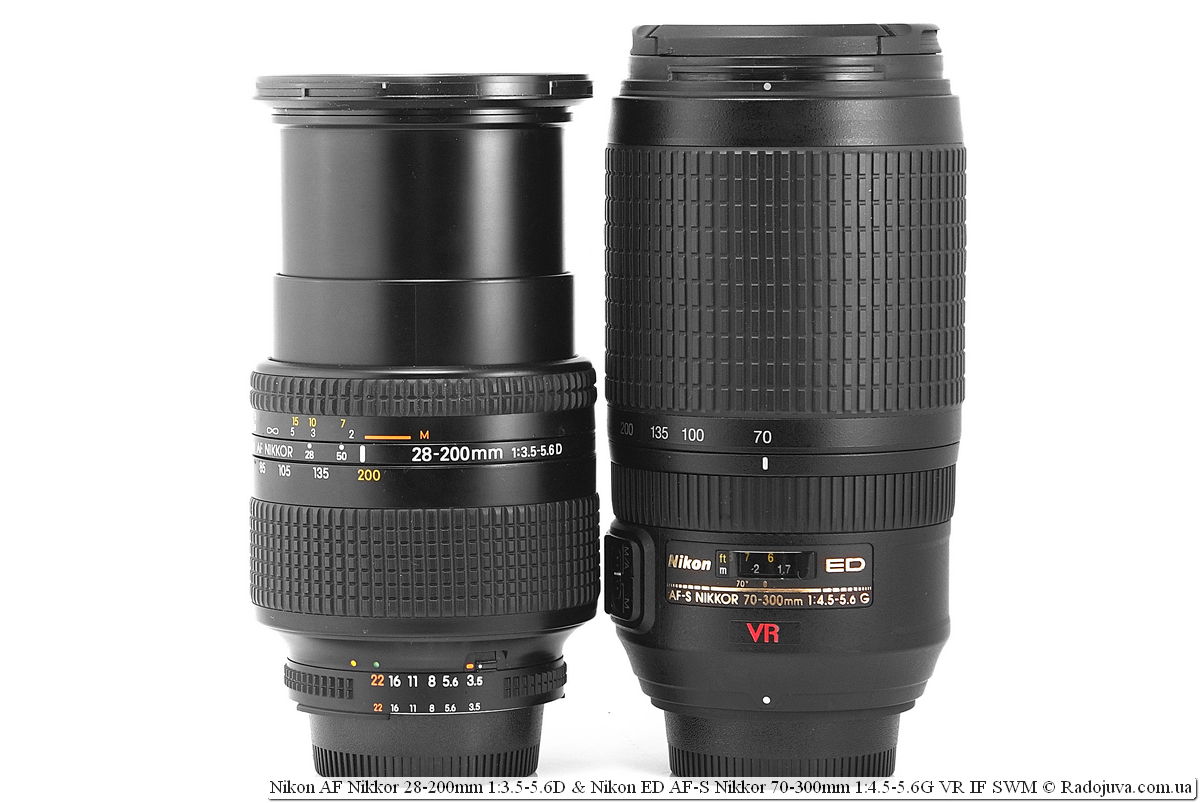
dimensions Nikon AF Nikkor 28-200mm 1: 3.5-5.6D and Nikon ED AF-S Nikkor 70-300mm 1: 4.5-5.6G VR IF SWM
Results
Nikon 70-300 VR is a good telephoto lens, the best of its kind. Perfect for Nikon FX and Nikon DX cameras.
UPDATE: On July 11, 2017, a replacement for this lens was introduced in the face Nikon VR ED AF-P NIKKOR 70-300mm 1: 4.5-5.6E.
Material prepared Arkady Shapoval. Training/Consultations | Youtube | Facebook | Instagram | Twitter | Telegram

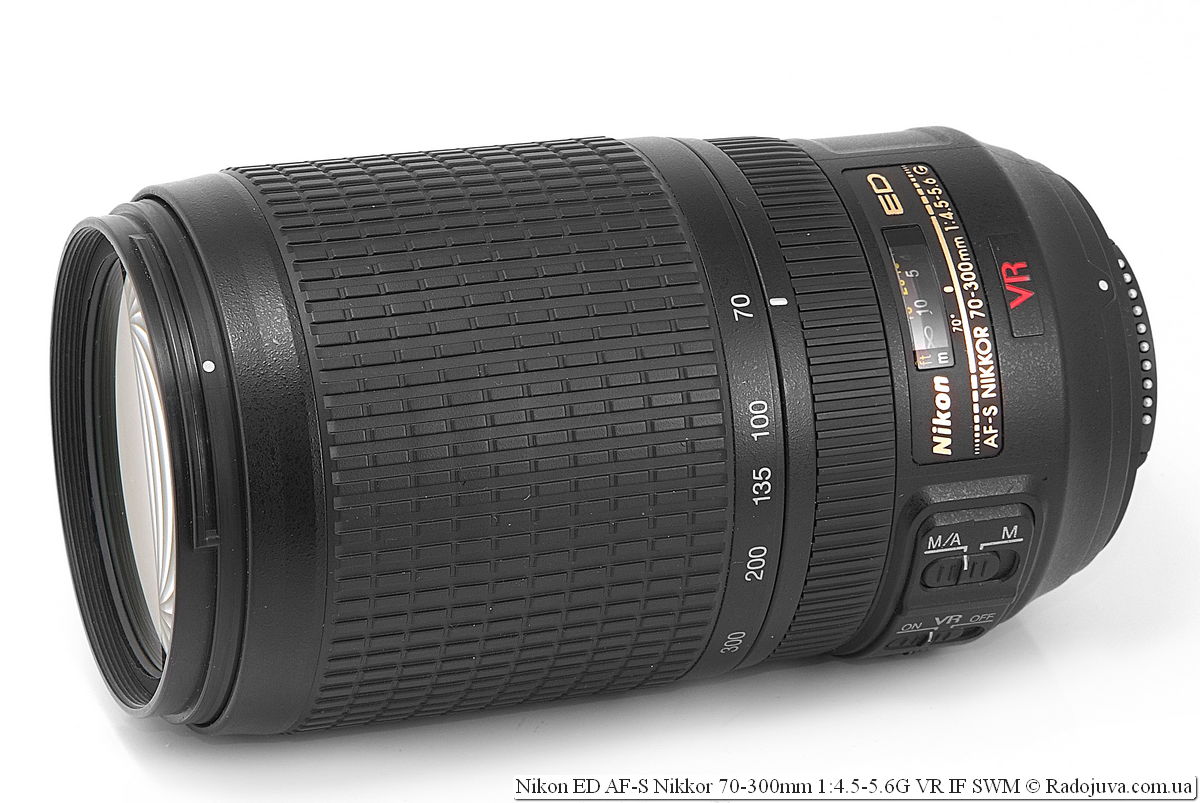
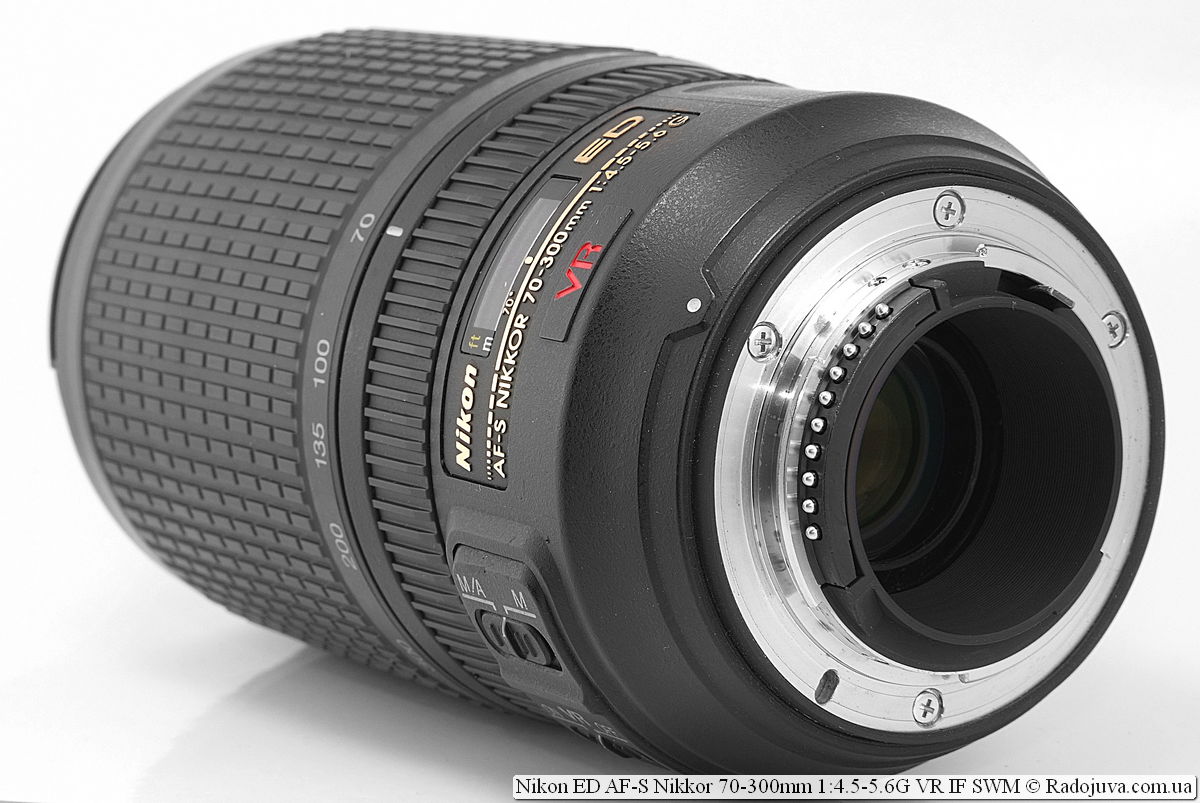
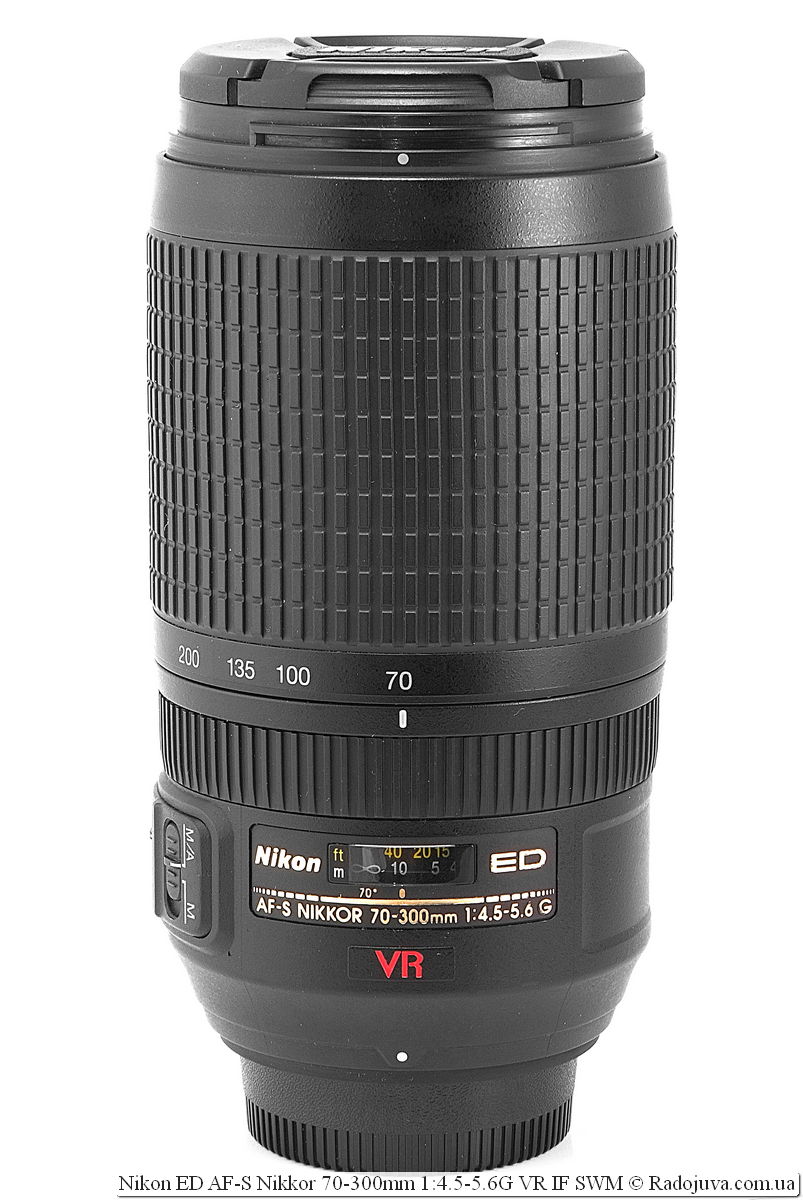
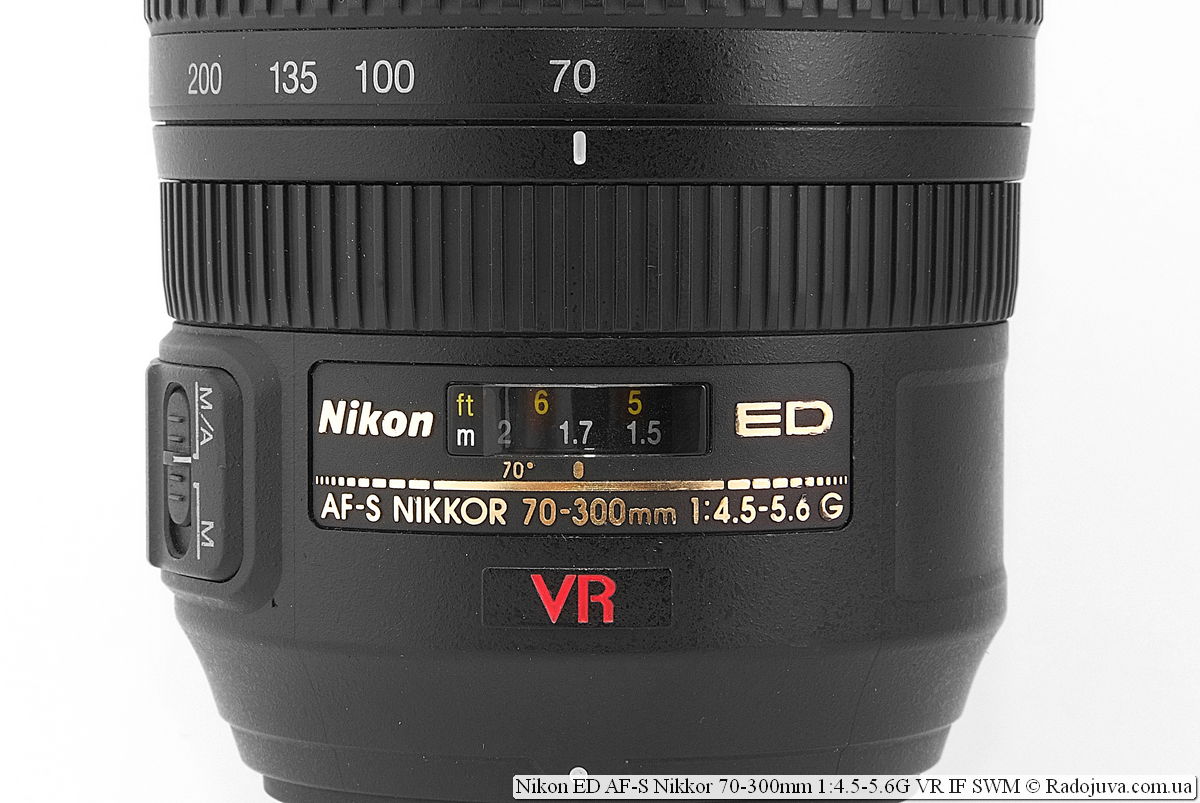
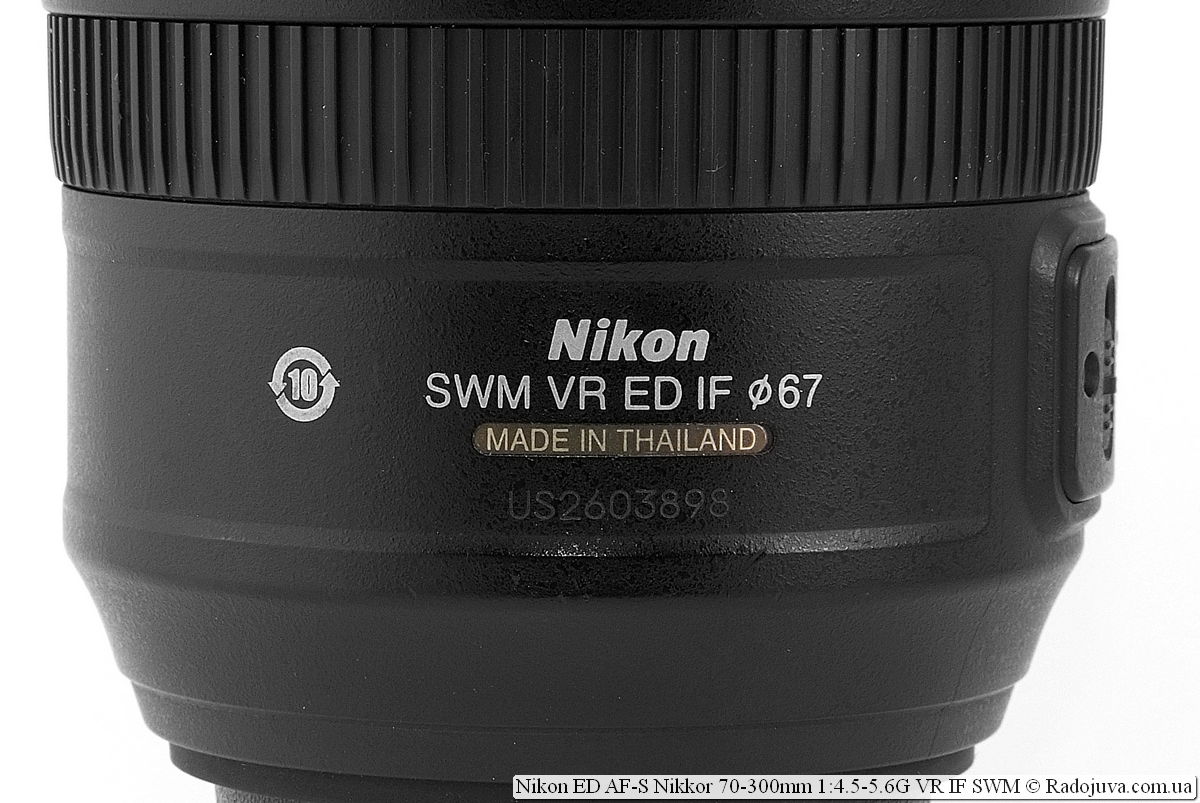
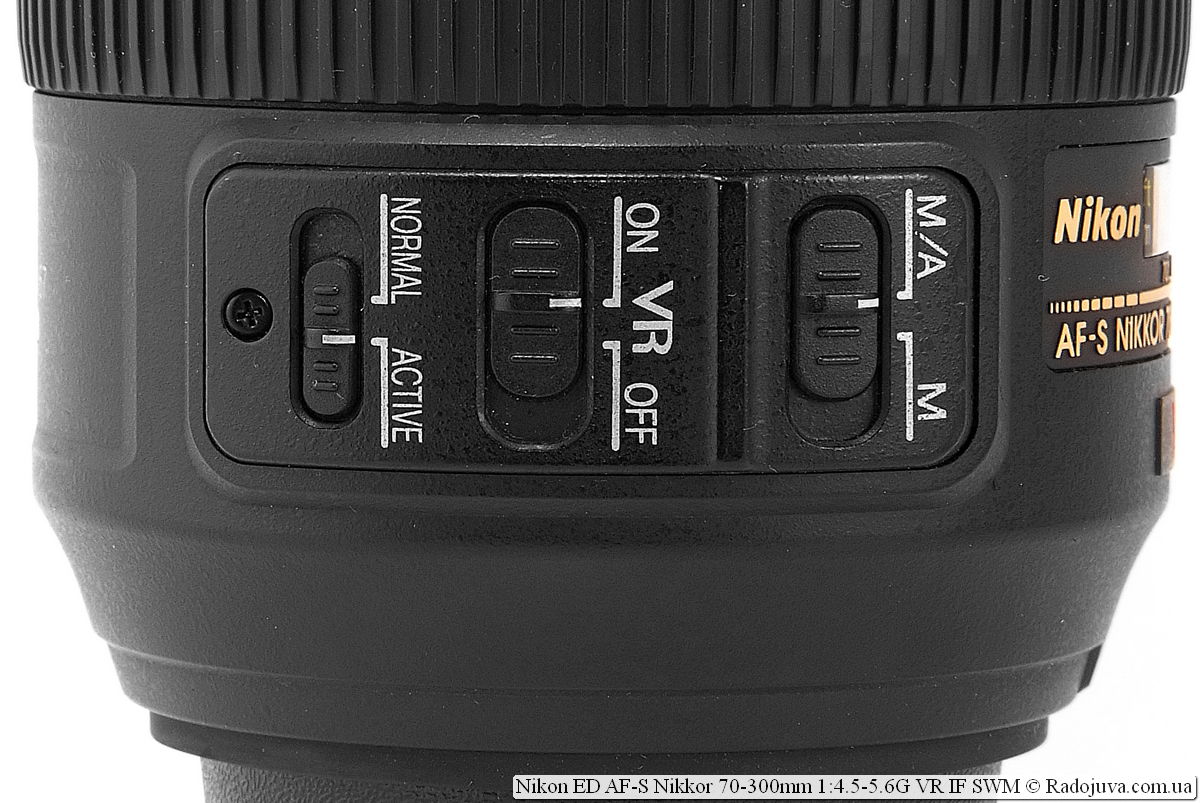
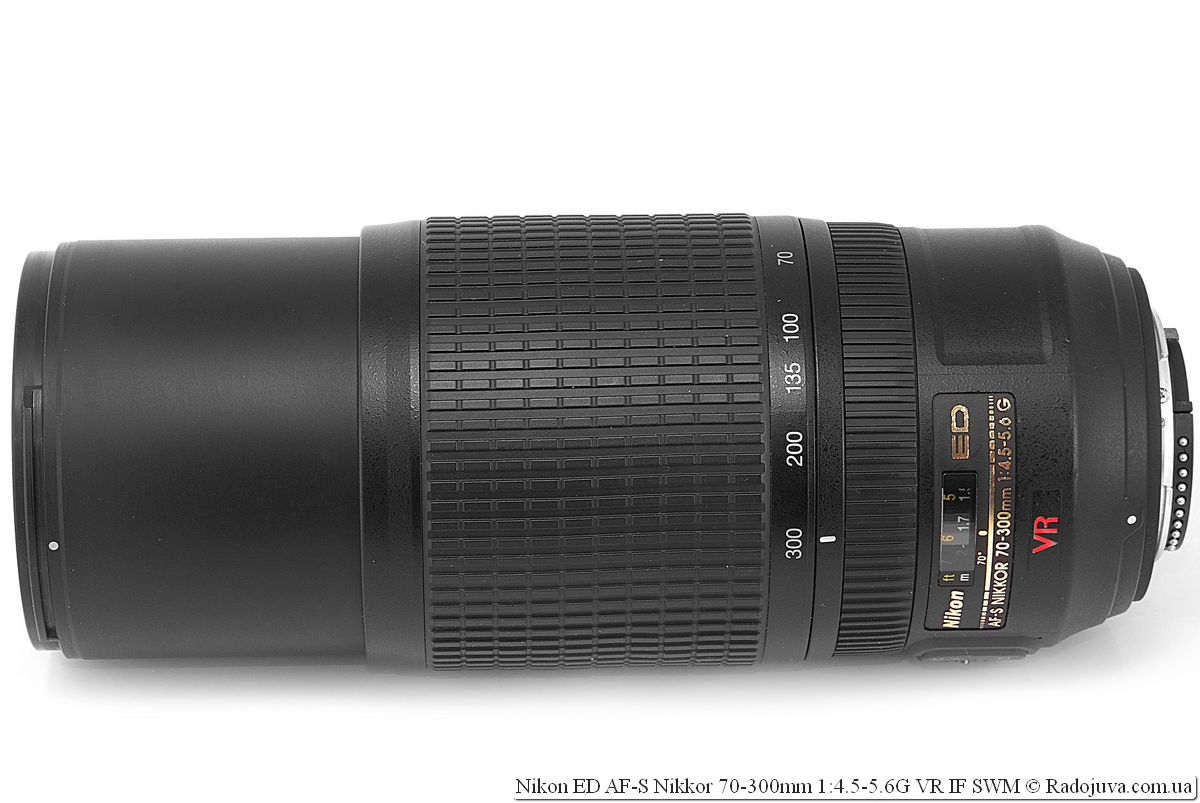
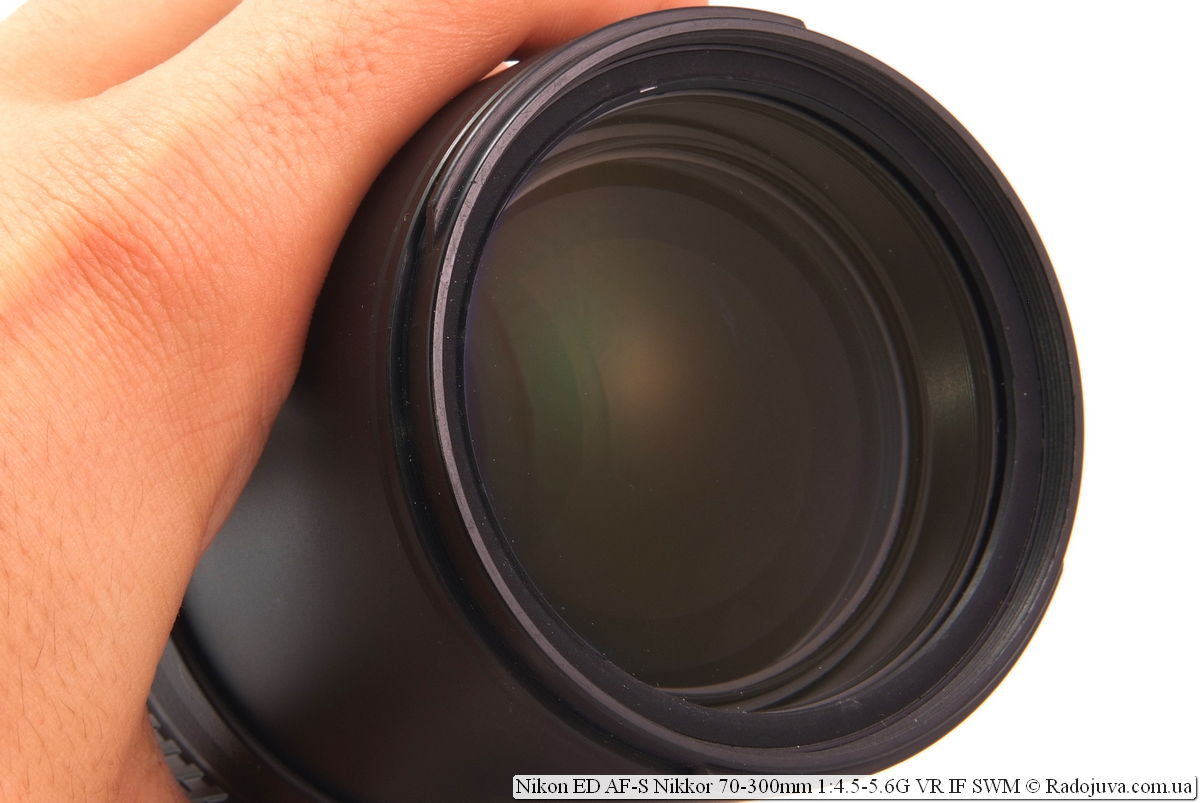
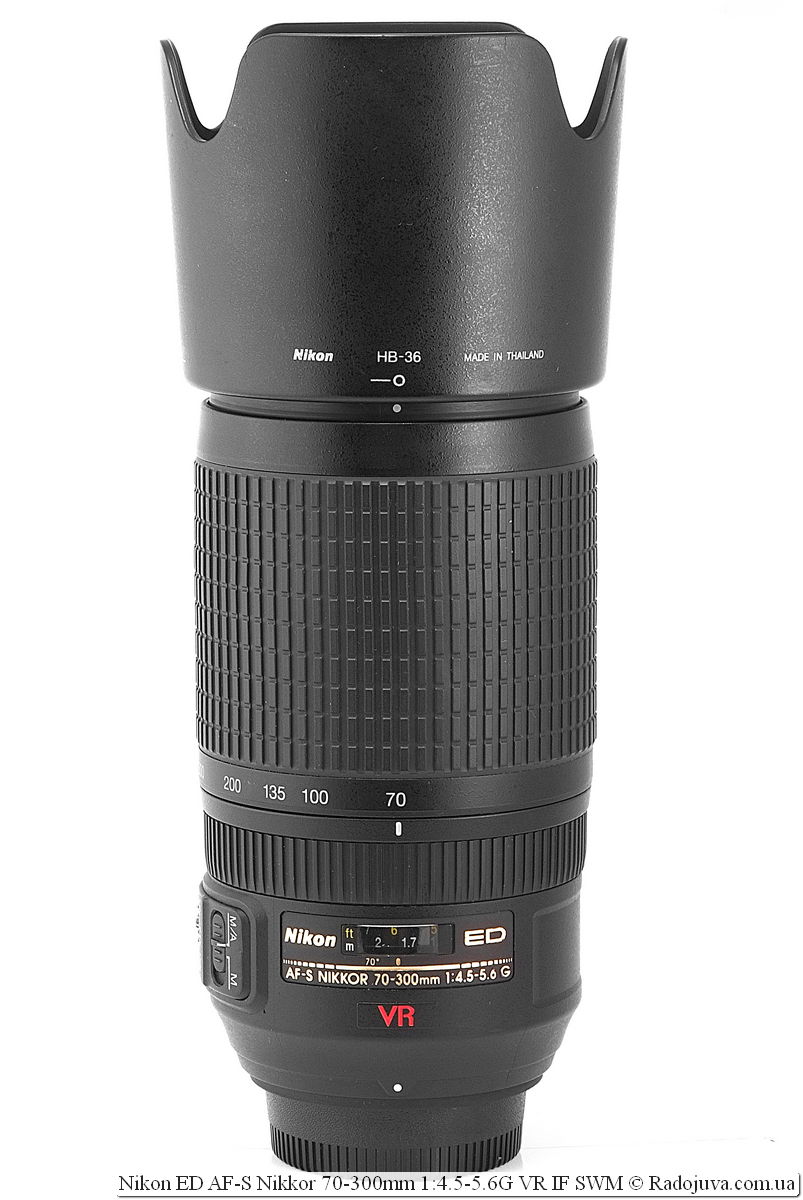
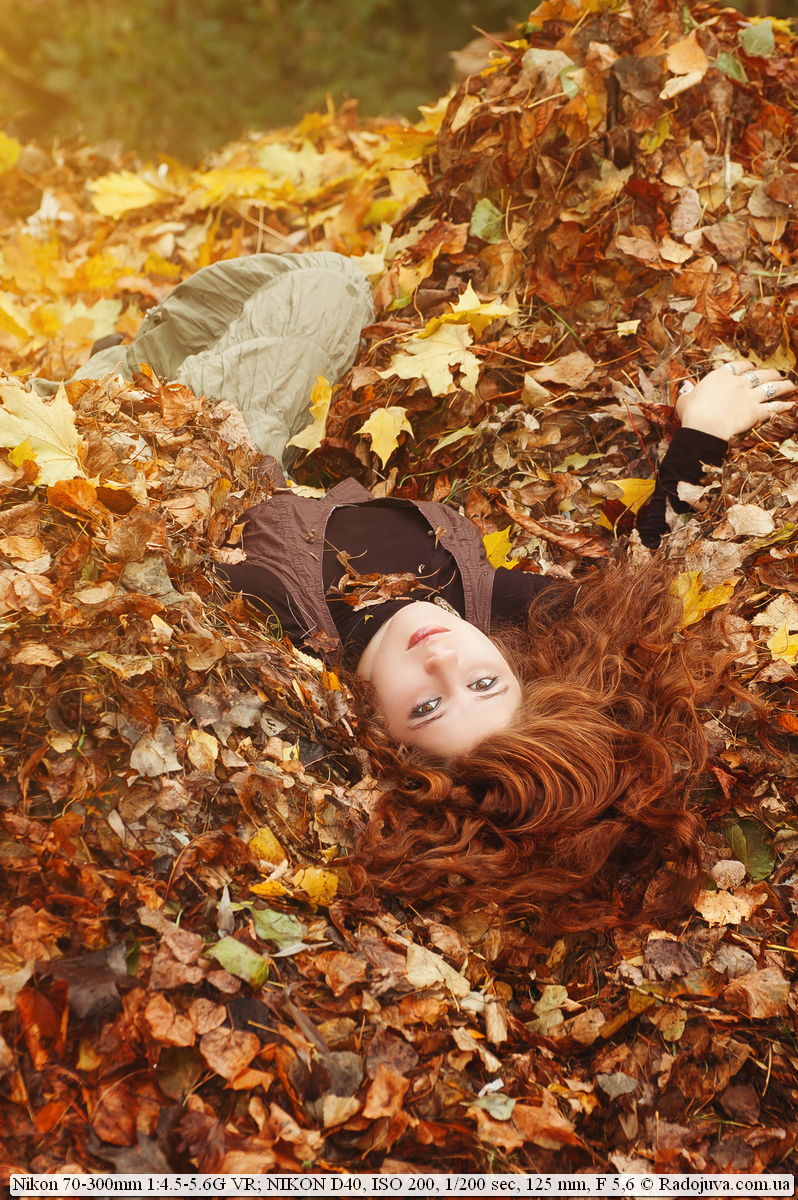

























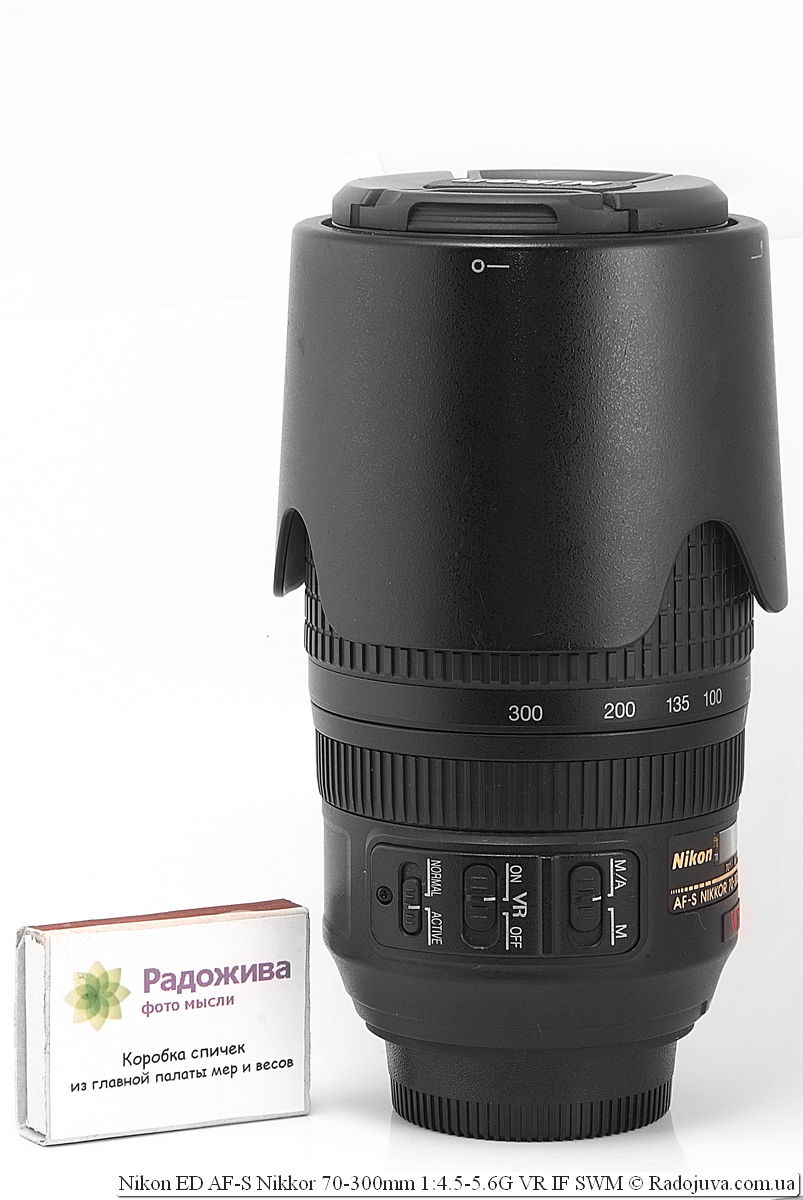
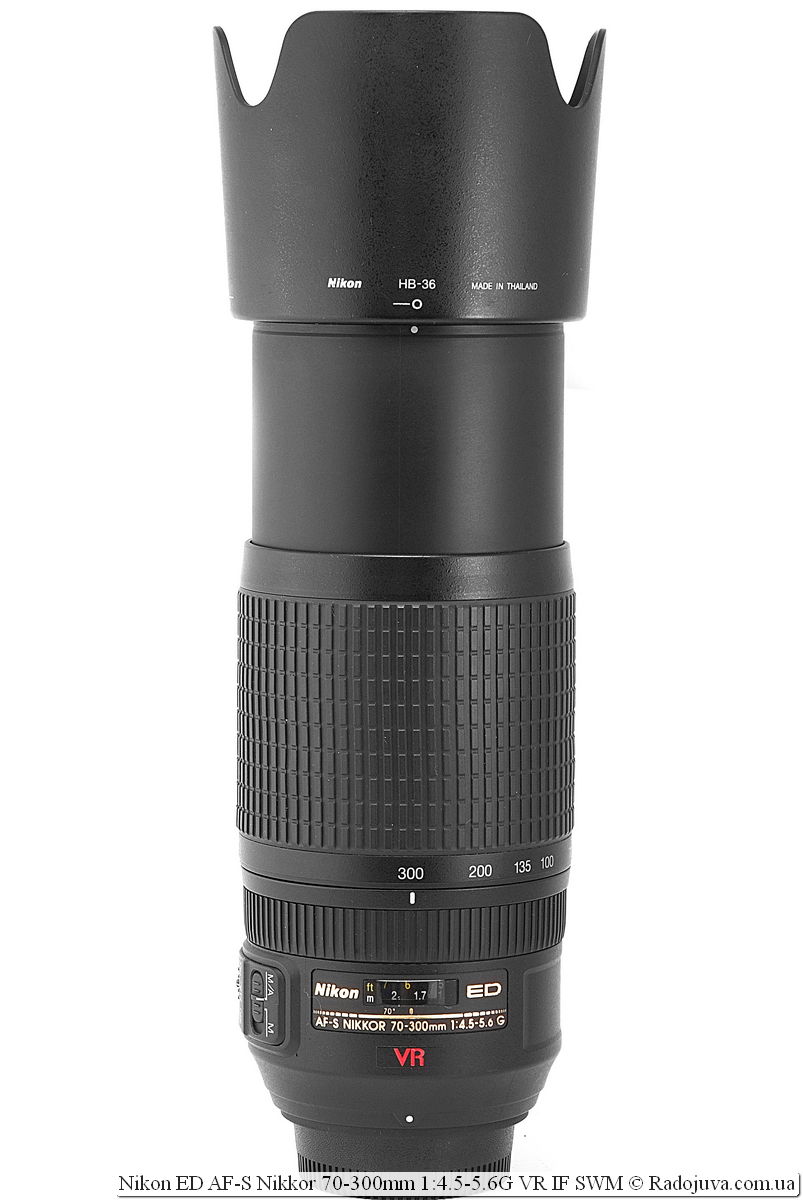
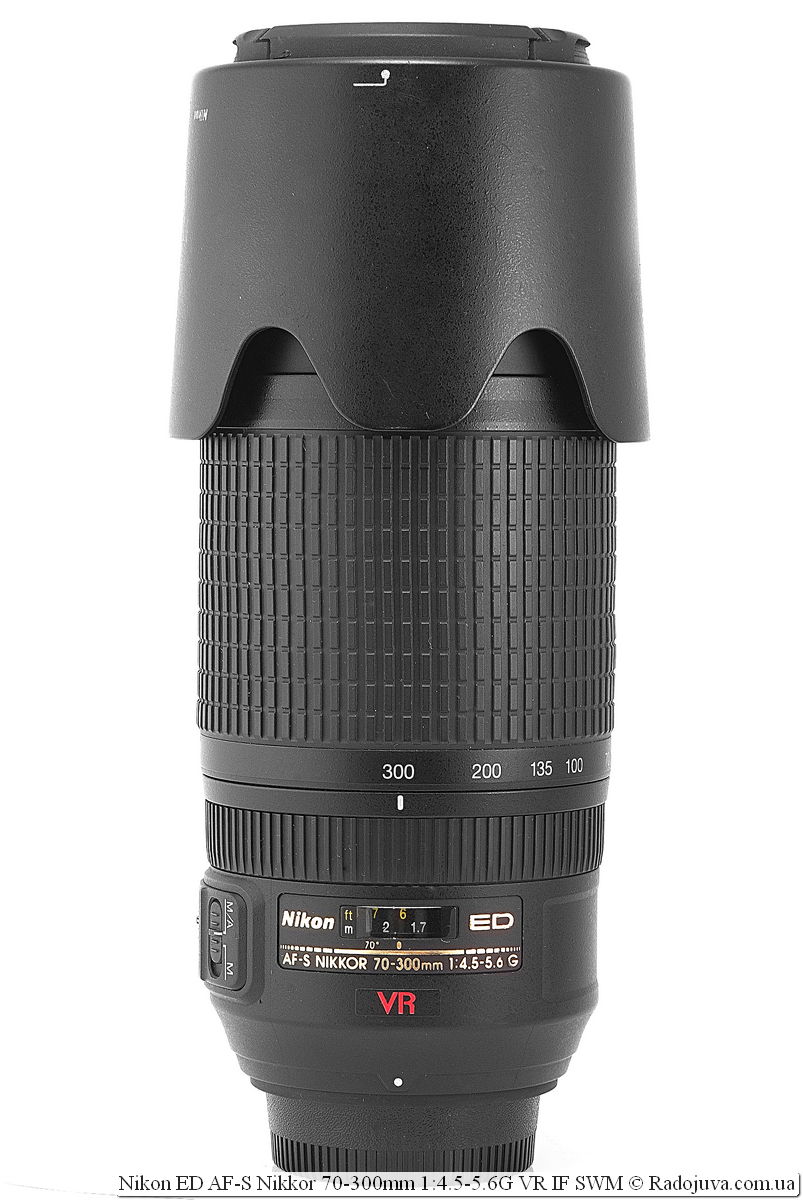
















Information for consideration:
70-300 VR, 140 mm, open
70-300 VR, 140 mm, open
which camera is the lens on.
D700.
80-200 \ 2,8 140 mm, open
35-70 \ 2,8 70mm, open
Thank you very much, Alex.
Sometimes, one picture is better than a thousand words.
I am always happy to help ... Contact me if anything ...
Alexei, can you do it on the boundary FRs, on 80 and 200 mm, also on the open, if not difficult, of course?
Not difficult ... Look, compare ...
70-300 VR, 80 mm, open
80-200 \ 2,8D, 80 mm, open
70-300 VR, 135 mm, open
80-200 \ 2,8D 135 mm, open
70-300 VR, 200 mm, open
80-200 \ 2,8D, 200 mm, open
Well, for dessert
35-70 \ 2,8D, 70 mm, open
Something like this ... You can share your opinion ...
Thanks, good examples. I have been wanting 70-300 for a long time, but I want AF-S 80-400 even more.
Maybe this will be more interesting?
http://www.kenrockwell.com/nikon/200-500mm.htm
Given that it was introduced the other day, this lens will not reach us soon)
Focal interesting, but you can’t take it off your hands: it’s hard to hold 2,3 kg by weight.
Inappropriate purchase, Comrade Bright ... As far as I understand, you have 70-210 \ 4 ... The most reasonable upgrade to 80-200 ...
Well, what can I say. Honestly, I did not expect this from 70-300.
The picture is almost identical, the depth of field is only a bit larger.
I would buy it myself instead of 80-200 2.8, but I shoot in a bad light, not slower than 1/360. I have to hang around with that.
This is all lighting technology, so that they are healthy. Once I rented a competition, so there it was impossible to discern what was happening on the other end of the floor. And sometimes a bright idea comes to them to show a high class, and install multi-colored spotlights, and for some reason there are always different systems, with different lamps. Then I can’t look at my pictures without validol.
I myself would appreciate these lenses:
The best color rendering, contrast and volume - 35-70 \ 2,8D,
80-200 - good portrait lens at higher focal lengths, has better background blur ...
70-300 VR - Extremely sharp, good for reportage, great stabilization ...
I will say to Petru S. that changing the 80-200 to 70-300VR, in my opinion, is inappropriate - these are lenses for different tasks ...
Tell me if you need some kind of filter just for protection or UV and which one will be the best option. on another or cheap.
UV is practically useless in digital, consider it protective. If you move around with the device in a crowd (mass events), then I definitely recommend putting on a filter. For this lens, a filter not lower than Marumi or Hoya is desirable - they are already an order of magnitude better than cheap Arsells and the like
No, not necessarily ... I have a Kenko MC wound - there is no particular harm ...
Kenko, this is already a firm))
I have “Arsenal”, and there is also Digi-optic, bought for 30 UAH at a rate of 8 UAH / $ - I needed a frame. It was a sin not to test it.
So, if there are light sources in the frame, the cheapest “defender” glares shamelessly, Arsenal is better, but Marumi WPC and Hoya HMC add only a subtle glare, so real multi-coating, as they say, rules (although Arsenal is also drawn MC)
Tested with a table lamp, with two lenses: 18-105 and 70-300, I post the most obvious example (phot on a tripod, in “M” mode)
D5100 + Nikkor AF-S 70-300VR F / 4.5-5.6G @ 300mm_f / 5.6
Should it vibrate when VR is on?
yes, it seems like no, familiar girls didn’t notice anything like that.
It still vibrates ;-)
Oh, and vibrates, a sort of, you know, erotic theme ...
To fix
”There is a 'VR ON / OFF' button on the lens” - not a button, but a switch
”In theory, 'Normal' can still
track camera movement to create panoramas. "- maybe I'm wrong, but maybe I mean" shooting with wiring "(I don't remember exactly, but it seems that shooting with wiring is mentioned in the instructions for the lens)
”Most often advised
use this mode when shooting on the move. " - in the instructions, the “active” mode is advised when shooting from a moving vehicle. Your proposal wording is not entirely clear.
”The stabilizer is not helpful when shooting moving subjects
it only removes camera and lens shake and movement. ”- still does not remove (removes a good tripod), but compensates.
AF-version 70-300 is in the “price block” :-)
Some things fixed.
From personal experience: The lens is good for reporting, fast, sharp ... For a portrait it is "boring", there is no zest, I replace it with 80-200, which has more interesting color rendition and contrast and volume ...
... and the focus of MK2 is slower ...
https://www.flickr.com/photos/102681618@N06/sets/72157659636752439
I write again, the site did not accept my comment for the first time ... There is no problem of high-speed focusing, for me on the D700 they are all high-speed ... The problem is overblown and exaggerated ...
Here's the thing - Nikon ED AF Nikkor 80-200mm 1: 2.8D (MKII) really has a slow focusing speed. Therefore, "all high-speed" is at least a delusion and it is not a pity to see a certain difference. By the way, I sold the same 80-200 μ2 because of the focusing speed and a certain inconvenience in the zoom / focus ring. I know what I am writing about, as I shot more than one hundred frames with this lens :).
Why do you like to argue so much, Arkasha? Disputes in life, you see, do not have enough ...
Yes, everything is simple, it’s fun to read your thoughts about any post about 80-200 2.8 :) By the way, you are banned from Ray for insulting the participants in the section of the same 80-200.
Arkady, decided to update the old review. It seems that the past was not bad.
By the way, the announcement of the stabilized nikon 24-70 won in the nomination “less than a thousand years”.
In the price block, different lenses are indicated.
Why such information?
Information for general development.
Due to certain difficulties, the filter for outputting an exact lens does not always work correctly.
I have had this lens for 2 years. Works in tandem with the D7100. Nothing in my collection of telephoto lenses gives this razor sharpness. I always close the hole at 300mm to f10-f16, in this mode it tears in sharpness and resolution 80-200 MkIII with a good 2x converter and without it, for distant objects. Allows you to make very strong crops - the quality remains decent!
The only thing I don't like is the color and pattern. Constantly drives into the cold, the pattern is very hard, contrasting and "technical". Therefore, for nature and art I prefer 55-300 with its warm soft “lamp” picture.
100% agree, 55-300 is better, more artistic, or something, more voluminous, so I sold my 70-300 without regret, one drawback, it is for crop, there is a small vignette on FF, which is not critical and can be corrected. , street is the thing! Focusing speed in straight hands does not matter, just the habit of doing everything yourself, even from “Zenith”;)
I completely agree with you, after 3 years of operation, the 70-300VR I sold it and bought 55-300, which is interesting is its bright beautiful picture, voluminous or something, it’s true that focusing is a little slower, but for the picture quality it’s possible to forgive the slowness, Yes, and easier than the first, significantly
Kirill - where else can I see your work?
Look at my work at jankowsky.photosight.ru - there you will find the entire list of my optics
Sorry, but often the horizon in your works is littered to the right, take a closer look
Good afternoon.
I plan to buy this lens and found a similar one (?) In Mvideo, but the name is slightly different there - Nikon AF-S Zoom-Nikkor 70-300mm f / 4.5-5.6G ED VR, IF SWM is missing. Is it the same lens, or different? Thanks.
The same.
Thanks for the answer and for your work!